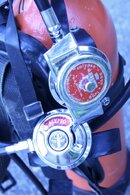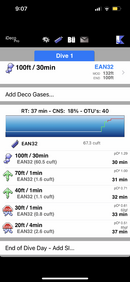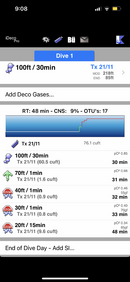Wow, just when I felt technical diving couldn't get more complex, this comes along. I have several other questions about this setupPure strokery. I would not/could not dive that configuration. How many points of failure are there in this setup?
--The regulator first stage appears to connect to the second stage via a presta valve. Has anyone looked at the performance through this valve?
--There are a lot of turns to the flow of the air from the first stage through to the second stage. Has there been an evaluation of performance loss due to all these changes in direction. If you will remember back to the 1980s, Scubapro decided to place an outlet on the top of their Mark V first stage because coming out the sides cause preformance losses (their less expensive first stage out-performed the Mark V).
--Lastly, the block which changes which tanks are used is behind the neck; anyone looked into whether there would be diver errors in determining which to turn off?
Now, I have a setup that meets the DIR requirements for a long hose, but they may not like it. It is an original Calypso regulator with a long hose and a second generation Calypso as the safe second.







